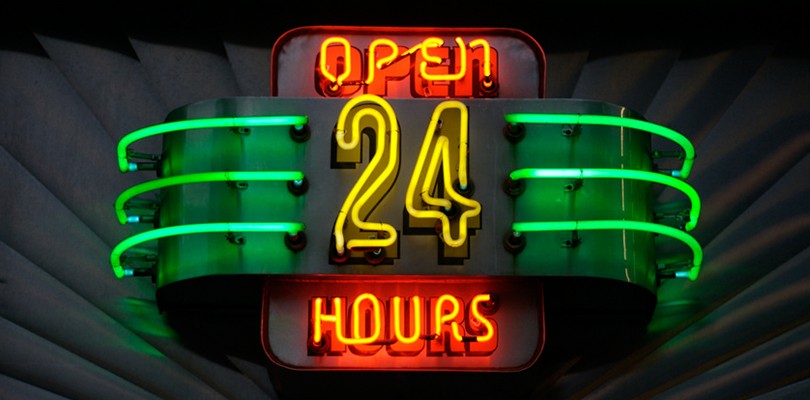Excel at Always-On Marketing with These Best Practices from Our Team to Yours
One of the greatest things about the internet is it’s open 24/7, whenever we need it.
As consumers we take this always-on functionality for granted. But as marketers, some of us are still stuck in a “campaign” mindset. Potential buyers are always looking for information, at every stage of the buying cycle. But sometimes we’re telling them “Sorry, We’re Closed.”
Always-on marketing means developing a comprehensive, continually-refreshed content library to educate and guide your buyers through the buying cycle. Whenever and wherever they have a question, your content can be there to provide the answer.
Our team has been developing our always-on strategy for years. Here are the best practices we use to make sure our content library is always open and always relevant.
1. Know Your Audience
It may sound like a cliché, but knowing your audience is the fundamental particle for building an always-on content strategy. It’s important to understand not just who your ideal audience is, but how they go about researching and ultimately making a purchase decision.
We recommend using buyer personas to gather information and drive your strategy. Here’s how to develop meaningful B2B personas:
- Identify the company types most likely to benefit from your offering.
- Identify the people within these companies who would be involved in purchase decisions.
- Interview people in these key roles—try for existing customers, potential customers, and even those who went with a competitor.
- Compile your insights to see how many distinct “stories” your content needs to tell.
- Create composite personas, including only data that is relevant to how the persona would make a purchase.
When properly developed, personas are differentiated by what information each needs to make a purchase decision. If you have two personas that can be given the same content, they can safely be combined.
2. Create Content for the Entire Buying Cycle
Marketers used to visualize the buyer’s journey as a straight line. Now it looks more like a plate of spaghetti: curves, tangles, and dead ends aplenty.
Rather than trace each individual path, you can think of three overall stages in the buying cycle. Buyers may move from one stage to the next at random, forward and backward, but your content can address them all. A healthy content mix should do all of the following:
- Generate interest and awareness of the problem your company can solve. Educate buyers about the issue, why it needs a solution, and establish your company as a helpful resource.
- Help buyers compare and understand options. At this point, content should help identify those who can benefit from your solution and may be persuaded to buy.
- Help truly interested buyers choose your solution. This kind of content focuses on why your solution is the best fit, and helps create a sense of urgency to speed up the process.
Many content organizations focus on the final stage, because content for that stage is most easily attributed to revenue. However, the majority of potential buyers are in the first stage. To meet them on their journey, you should have ample content that focuses on being helpful and generating awareness and interest.
3. Put Your Content to Work
Great content is a great start, but customers need to see the content for it to have the desired effect. It’s important to have a distribution and amplification plan in place, even before you start creating content.
Achieving organic reach in a crowded market can be tricky. Creating content that comprehensively addresses a hot-button issue for your audience is the first step to earning search engine ranking. Add a little basic SEO to give it a further boost. Adding influencer marketing to your content can help it reach new audiences as well.
Our team has a mantra for amplification: “Organic is good. Paid is better.” We think it’s great when people discover our content, but there’s far more value in promoting that content to a specific, strategically targeted group of people. On LinkedIn, start by posting content to your Company Page. Then pick your top-performing content—so you know it’s already resonating with an audience—and create Sponsored Content. Target your most relevant audience. Then let the LinkedIn algorithm expand your audience, too.
4. Measure and Optimize
Always-on marketing should ideally be always-improving marketing. It’s important to monitor how well each piece of content is addressing customers where they are and leading them to the next step. That means:
- Is your first-stage content creating interest and awareness? Is there an uptick in searches related to your brand? Is your Company Page getting more subscribers? Are there likes and comments on the content you share?
- Is your second-stage content helping buyers move toward a decision? Do they tend to read more content after the piece that first got their attention? Do they opt in to a subscriber list or sign up for a gated asset?
- Is your third-stage content helping buyers choose your solution? Do buyers contact the sales department or schedule demos after reading it? Are sales cycles shrinking?
The answers to all of these questions can help you continue to refine your strategy. Use these insights to adjust your content mix, dial back what isn’t working, and double down on what has proven to be effective.
Buyers are looking for information 24/7. You can meet them whenever they need you with an always-on content strategy. When you know who you’re creating content for, have a good content mix with strategic amplification, and are constantly improving, you can light up an “Open 24 Hours” sign for potential customers.
To kickstart your 24/7 marketing strategy, download The Sophisticated Marketer’s Crash Course in Always-On Marketing.




